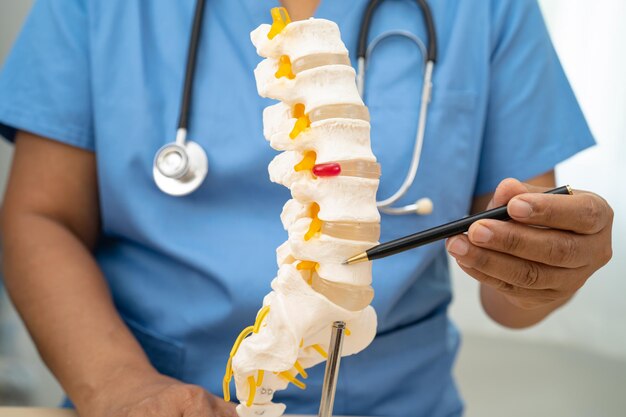Scoliosis is a condition in which the spine curves abnormally to the side, often in an “S” or “C” shape. While it can develop at any age, it most commonly appears in children, especially during growth spurts in early adolescence. Early detection is essential for effective management and treatment. Understanding the early signs and symptoms can help parents seek medical advice promptly.
1. Uneven Shoulders
One of the earliest and most noticeable signs of scoliosis in children is uneven shoulders. One shoulder may appear higher than the other, or one side may protrude forward more than the other. This asymmetry can become more apparent when the child is standing straight or when looking at them from behind.
2. Prominent Shoulder Blade
In some cases, one shoulder blade (scapula) may stick out more than the other. This is due to the twisting of the spine, which pulls one shoulder blade outward while keeping the other closer to the ribcage.
3. Uneven Waist or Hips
Children with scoliosis may develop unevenness in their waist or hips. One hip may appear higher or more prominent than the other, or the space between the arm and waist may differ on either side. Parents may notice this while the child is standing straight or when wearing form-fitting clothing.
4. Tilted Head
If the head appears to lean to one side or is not aligned with the center of the pelvis, it could be a sign of scoliosis. This misalignment occurs because the curvature of the spine affects the body’s overall balance.
5. Leaning to One Side
Children with scoliosis may have a tendency to lean to one side more than the other when standing or walking. This subtle leaning may seem like poor posture at first, but if it persists, it could indicate an underlying spinal issue.
6. Rib Cage Asymmetry
When scoliosis affects the middle part of the spine (thoracic spine), it can cause an uneven rib cage. This may become more apparent when the child bends forward. One side of the rib cage may stick out more than the other due to the spine’s twisting.
7. Clothing Doesn’t Fit Properly
Parents may notice that their child’s clothing begins to fit unevenly. For example, a shirt might appear longer on one side or the hem of a skirt or pants may hang unevenly. This is often one of the first clues that scoliosis may be present.
8. Back Pain
While scoliosis is often painless in children, some may experience discomfort or pain in the back, particularly during physical activities or after long periods of sitting or standing. Pain is more common in cases of severe curvature, but any persistent back pain in children should be evaluated by a healthcare professional.
9. Fatigue
Children with scoliosis may tire easily, especially after standing or sitting for extended periods. The abnormal curve of the spine can put additional strain on the muscles, leading to fatigue.
10. Visible Curve in the Spine
In some cases, the spinal curve itself may be visible. Parents may notice the curve when the child is standing with their back exposed or when bending forward. This is especially common in more pronounced cases of scoliosis.
What Should Parents Do If They Notice These Signs?
If you notice any of these early signs or symptoms in your child, it is important to seek medical advice. A healthcare professional can perform a physical exam and may recommend further tests such as X-rays to confirm the presence of scoliosis. Early diagnosis can lead to better treatment outcomes, as some cases of scoliosis can progress rapidly if left untreated.
Scoliosis in children can be challenging to detect in its early stages, but paying attention to physical changes like uneven shoulders, hips, or a visible curve in the spine can help parents recognize the condition early. If scoliosis is suspected, early intervention through bracing, physical therapy, or, in severe cases, surgery can prevent further progression and help the child maintain a healthy, active life.










